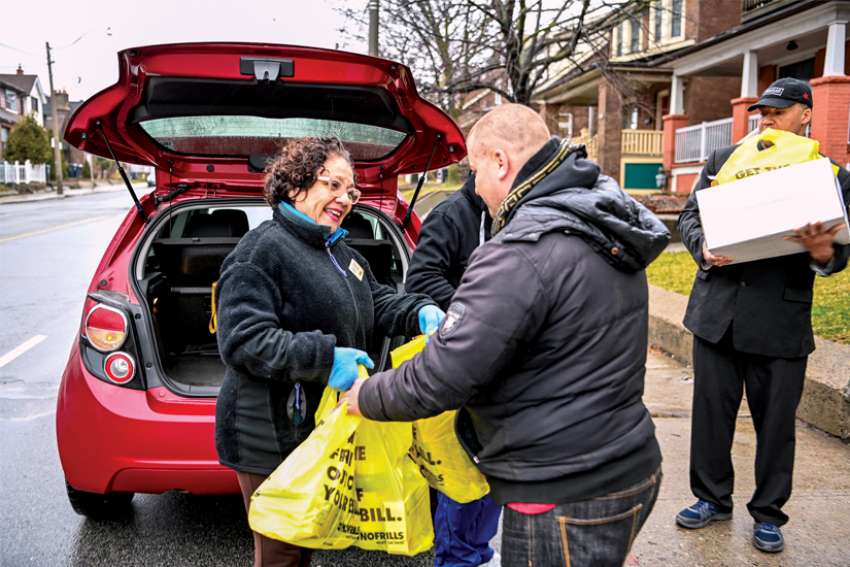Martyred in 303 during widespread persecution of Christians, St. Vitus became inexplicably important to Germans in the Middle Ages, who believed that dancing in front of his statue would bring a year’s worth of good fortune. It was no doubt those who took this ritual to extremes — and there were many — led to one of the more unusual associations with the saint’s name: St. Vitus’s Dance.
The term will be familiar to many as the colloquial name for an extraordinary medical condition known as Sydenham’s Chorea, whereby sufferers are afflicted with uncontrollable movement of the hands and feet, a jerking motion that can mimic a frenzied kind of dance. It is this condition that presumably afflicted untold numbers of citizens in the Middle Ages, leading to one of the more extraordinary outbreaks in history.
In the late 1300s a “dancing plague” was widely reported wherein crowds of people began to dance in the streets. This choreomania, as it is sometimes called, was apparently so prolonged and severe that thousands of people collapsed from exhaustion or died.
A BBC History magazine article suggested this phenomenon was witnessed as early as the seventh century and continued with particular frequency from the 14th to the 17th centuries. The ailment struck men, women and children equally, and could last weeks.
While the condition is named after a 17th-century British doctor, Thomas Sydenham, there have been many causes ascribed to the malady. Researchers have blamed contaminated flour and a fungal disease, others have speculated on a psychogenetic disorder or mass hysteria. Inevitably, many attributed this to supernatural and demonic influences.
In The Dancing Plague, which tells the story of Frau Troffea and the plague of 1518, author John Waller points out that while some observers “blamed restless spirits, demons” for the strange occurrence, eventually the people “decided that this affliction had been sent from Heaven.” Whatever the cause, St. Vitus, somehow, became associated with this illness and in the process was named the patron saint of dancers, musicians and entertainers.
I thought of all this in the context of our pandemic and the wide-scale implications of COVID-19. Unlike the Middle Ages, we have sophisticated science, incredible communication tools and a capacity to respond that is staggering.
Even so, we have watched the world stumble slowly to an understanding of this plague, watching with perplexed curiosity and then slowly — often too slowly — taking action. Our efforts to find a vaccine for this are not unlike the earlier medical efforts that tried to analyze the causes and effects. And of course, our faith life has been impacted and, for some, shaken.
I have read tweets and e-mails chastising the churches for closing instead of trusting in the supernatural power of God to protect. Others have used Scripture to condemn our corrupt world, insisting that this is yet another plague sent down by God to rid the Earth, flood-like, of the unworthy that populate our blighted planet.
As with all crises, many have been keen to manipulate this for ideological purposes, blaming communism, capitalism, white supremacists and anti- or pro-environmental causes.
Anne Snyder, editor-in-chief of Comment, puts it well: “Plagues historically have routed the rivets of society’s assumptions of what is good and what is true, subverted authorities and opened up new pathways for justice and shalom.”
She goes on to ask, “How is this coronavirus doing that? What is already being revealed?” This is the important question. My answer: It’s in the flowering of goodness in the face of fear; the gift of care in the space of need. In the midst of all this anxiety, the human spirit can be found triumphant.
A month ago, there was no such concept as “caremongering” — an antidote to scaremongering — and yet now we find this social movement reaching out to the most vulnerable to offer aid. Tens of thousands of people, in just a few days, have signed up to help those most vulnerable.
Musicians and artists, potentially destitute because of cancellations of all public performances, are putting their art online to lift the spirits of the shaken. A priest in Lombardy says Mass to an empty church, but not before taping the selfies of every member of his congregation to the pews. Italians stand on their balconies and raise their voices in song, and people of all nations applaud the city’s medical personnel as they sweep the streets below. For every gesture of despair, a thousand gentle kindnesses are done.
As Pope Francis puts it, the crisis reminds us “that humankind is one community.” As we practice social distancing, more and more of us are drawing closer, understanding our shared humanity. It is a different kind of dance that expresses our indivisible connection to each other.
(Turcotte is president of St. Mary’s University in Calgary.)


